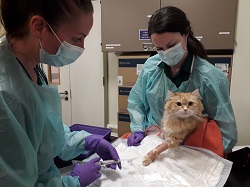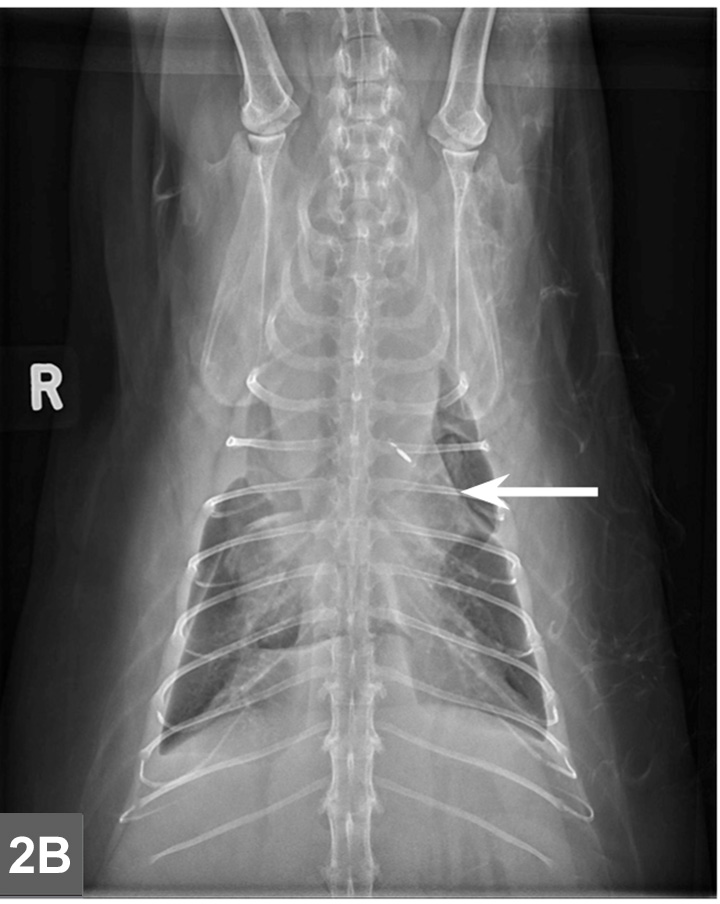pleural effusion cat lymphoma
This occurs in cats either because too little fluid is being absorbed in the pleural cavity or because too much fluid is being produced in the pleural cavity. Coughing may occur secondary to compression of the.

Feline Lymphoma Clinician S Brief
Typical clinical signs include dyspnoea and exercise intolerance due to the presence of the space-occupying lesion and pleural effusion.

. Alterations in the cats blood pressure and protein content in the blood or the. The thoracic radiographs revealed significant pleural effusion. Pleural effusion is the abnormal accumulation of fluid within the chest cavity which is lined by a membrane -- the pleural lining.
The aim of this. This syndrome is caused by infection with a mutated form of a feline coronavirus. Cats presenting with pleural effusion are nearly always in respiratory distress ranging from an increased respiratory rate and effort to open mouth breathing.
EATCL type II is associated with indolent clinical behavior and prolonged survival time and. Up to 25 cash back With pleural effusion youre usually dealing with one of two things- Lymphoma cancer or CHF congestive heart failure. When FIP affects the chest cavity pleural effusion results.
Traditional veterinary classification has distinguished between transudates modified transudates and exudates. Pleural effusion is typically. Found with right congestive heart failure obstruction to lymphatic drainage by tissue adhesions in pleural space lung lobe torsion neoplasms and abdominal contents herniating.
The therapeutic intervention also provides your first diagnostic test. Four standard effusion types recognized in addition to blood. Feline lymphoma is a malignant cancer of the lymphatic system the exquisitely structured arrangement of internal organs and tissues that directly or indirectly influences virtually every aspect of a cats physical existence.
Cats of the Siamese breed are overrepresented for both mediastinal lymphoma young cats and chylothorax. Doctors may be abl. Some of the symptoms of pleural effusion include the following.
Unfortunately says Margaret McEntee DVM professor of oncology at Cornell Universitys College of Veterinary Medicine it is the most frequently. Pleural effusion or pericardial effusion can cause muffled heart sounds. Mediastinal--most cats with mediastinal lymphoma are relatively young and FeLV ELISA positive.
Fluid overload in cats most commonly during fluid therapy Lung lobe torsion. In the latter situations therapeutic intervention must be initiated quickly to prevent respiratory arrest. Classification of pleural effusion PE is central to diagnosis.
Either way the prognosis is not good. Rapid breathing Breathing with an open mouth Lethargy Lack of appetite Weight loss Chest pains Fever Coughing Unusual positions while sitting or lying down Blue tongue or gums. Ing 65 feline pleural effusions where diagnosis was.
Major Differential Diagnoses for Pleural Effusion in the Cat. Form of feline lymphoma arises from diffuse mucosal associated lymphoid tissue MALT of the small. Accumulation of fluid in the pleural space.
Consists of small to intermediate-sized lymphoma cells which is consistent with current terminology that. The feline leukemia virus and feline immunodeficiency virus tests were negative. Chylothorax has been reported in a cat after ligation of the left brachycephalic vein.
Cats with pyothorax and effusion secondary to trauma had the best prognosis for complete. Pleural effusion can be confirmed with radiography a single DV view if patient permits or thoracic ultrasonography. The most common causes for pleural effusion in all 380 cats were found to be CHF n155 408 and neoplasia n98 258.
Cats may develop open-mouthed breathing in an effort to increase air flow. Most effusions were detected during the initial physical examination and were modified transudates. Thoracic radiography is useful if clinical suspicion of respiratory disease but uncommon to see abnormal pulmonary parenchymal pattern perihilar or retrosternal lymphadenomegaly mediastinal mass or pleural effusion associated with alimentary lymphoma.
However they do not contain chylomicrons and therefore do not have the classical milky aspect of true chylous effusion. Most cats with alimentary lymphoma are FeLV ELISA negative. Objectives Non-chylous lymphorrhagic pleural effusions are transudative effusions with a predominance of lymphocytes.
Other causes included pyothorax idiopathic chylothorax trauma FIP nontraumatic diaphragmatic hernia vasculopathy uremic pleuritis hypoproteinemia and vitamin K antagonist toxicity. Trauma is an uncommonly recognized cause of chylothorax in dogs and cats because the thoracic duct heals rapidly after injury and the effusion resolves within 1 to 2 weeks without treatment. Pleural effusion can have a number of different causes including diseases of the heart lungs or other systemic diseases.
Cats with pleural effusion often have rapid shallow breathing and pet owners may notice increased respiratory effort. Palpable mass facial deformity pleural effusion and positive FeLV status will raise the index of suspicion for large cell lymphoma. Feline infectious peritonitis.
Tumors in the lungs or chest wall can lead to pleural effusion. The most common presenting clinical signs include dyspnoea tachypnoea inappetence and cough with half of the cats presenting with pleural effusion at diagnosis. Exudate effusion is generally due to inflammation or increased vascular permeability and can be one of several types including.
Some affected cats may also cough. Feline mediastinal lymphoma commonly occurs in young cats with a median age at diagnosis of three years and has commonly been associated with a positive FeLV status. The aim of this study was to evaluate in 20 cats presented with PE paired samples of serum and pleural.
This type of effusion has been anecdotally associated with cardiac diseases in cats but studies are lacking. In human medicine PEs are divided into only two categories. In some cats infection with mutated coronavirus can lead to blood vessel damage which results in fluid leakage.
Cats of the Siamese breed are overrepresented for both mediastinal lymphoma young cats and chylothorax. We try to get these cats to survive 9-12 months. Chronic inflammation may be associated with development of lymphoma.
Pertinent findings included a high occurrence of pleural effusion with mediastinal lymphoma and other types of intrathoracic neoplasia pyothorax cardiomyopathy and feline infectious peritonitis virus infection. Sixteen cases eight with chylous effusion had no underlying disease identified. Cancer most commonly lymphoma Fungal infection.
A cytology evaluation of the pleural fluid strongly suggested a lymphoma containing variable sized lymphocytes with frequent mitotic figures and prominent nucleoli.

Read About Oncology In This Article By Leanne N Twomey And Rick A Alleman

Pin By Dr Abuaiad On Lymphatics Nuclear Medicine Spinal Lesion Spinal
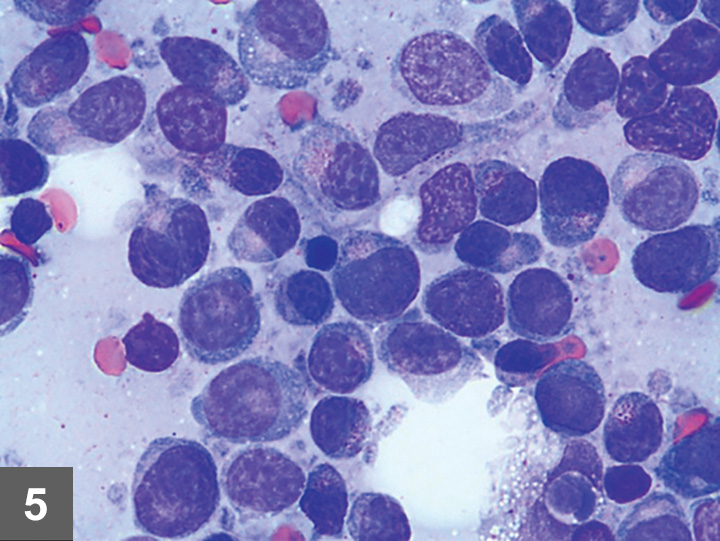
Feline Lymphoma Clinician S Brief

Figure 3 From Pericardial Lymphoma In Seven Cats Semantic Scholar

Lymphoma In Cats Veterinary Partner Vin

Feline Lymphoma Clinician S Brief
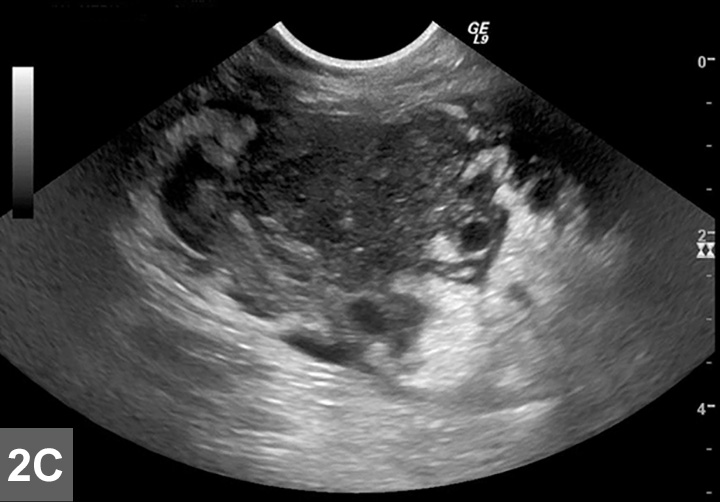
Feline Lymphoma Clinician S Brief
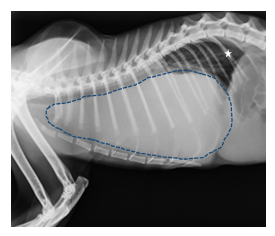
Case Report Mediastinal Lymphoma In Cat Alicia Moj Anatomy Physiology

Pleural Effusion Fine Needle Aspirate Mediastinal B Cell Lymphoma Download Scientific Diagram
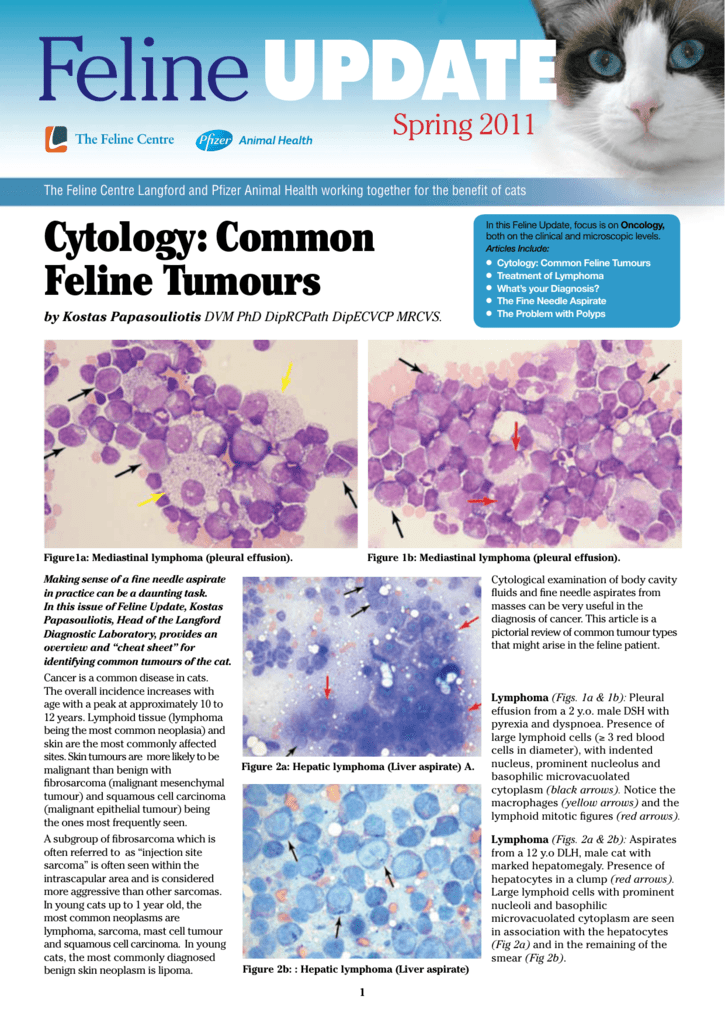
Cytology Common Feline Tumours

A Histology From Medium Size B Cell Pericardial Lymphoma Of Cat 2 Download Scientific Diagram
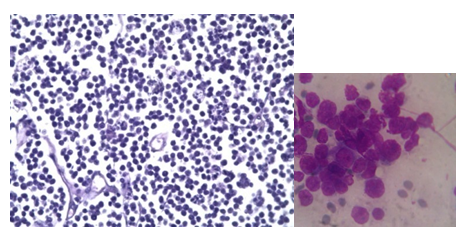
Case Report Mediastinal Lymphoma In Cat Alicia Moj Anatomy Physiology

Feline Lymphoma Clinician S Brief
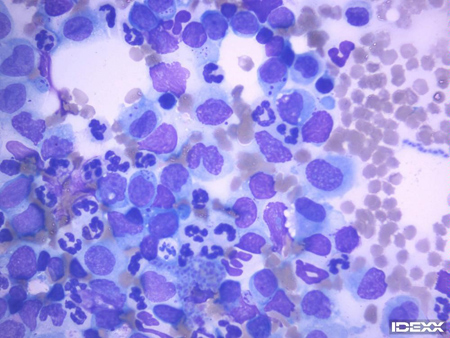
Feline Lymphoma What Your Need To Know The Animal Medical Center

Lymph Node Marginal Zone B Cell Lymphoma Characteristic Marginal Zone Download Scientific Diagram

